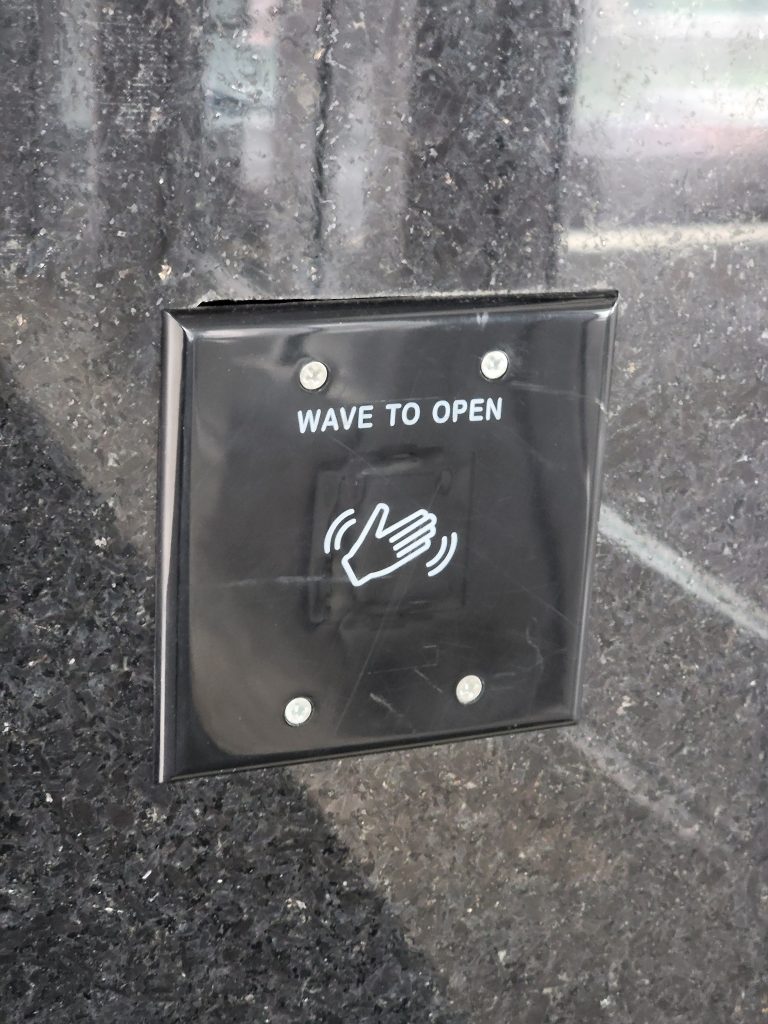This is the first post of a two-part series about interfaces with that are frustrating for the user.
One way to open doors at ISU is to use the “wave to open” mechanisms. In the entrances to buildings, beside the doors, you can find a square that lets you wave your hands over them to open the doors. This is contrasted with “push to open” buttons that open doors when you push a large button.

I find wave to open much more frustrating than push to open. For waving to open, the extent to which I have to wave to open a door is confusing, because wave to open lacks tactile feedback and the action of waving varies more than pushing a button.
At the same time, I believe that wave to open mechanisms fail more than touch to open. In a side entrance to Howe Hall closest to the bicycle racks, the door opener does not even work or has too long of a delay between registering the waving motion and opening the door.
There are several ways to improve the experience of waving to open doors.
The first improvement is that wave to open can be combined with a push-button mechanism so that individuals who prefer the consistent response of buttons as well as individuals who are unable to push buttons are both accommodated. This can be seen in the pedestrian crossing buttons in University Blvd as I bike to VRAC and back to Freddy each day.
The second improvement is that the wave to open mechanism can play a sound or show a visual cue upon registering the hand motion rather than only depending on the door opening for feedback. For example, when the motion has been registered, the below blue light becomes green and the device beeps. This way, users can stop waving their hands and understand the delay between the motion being registered and the door opening rather than not understanding each process that is occurring and wave their hands for longer than needed.


Excellent example. I really like your suggested improvements, as well. This is right on target.